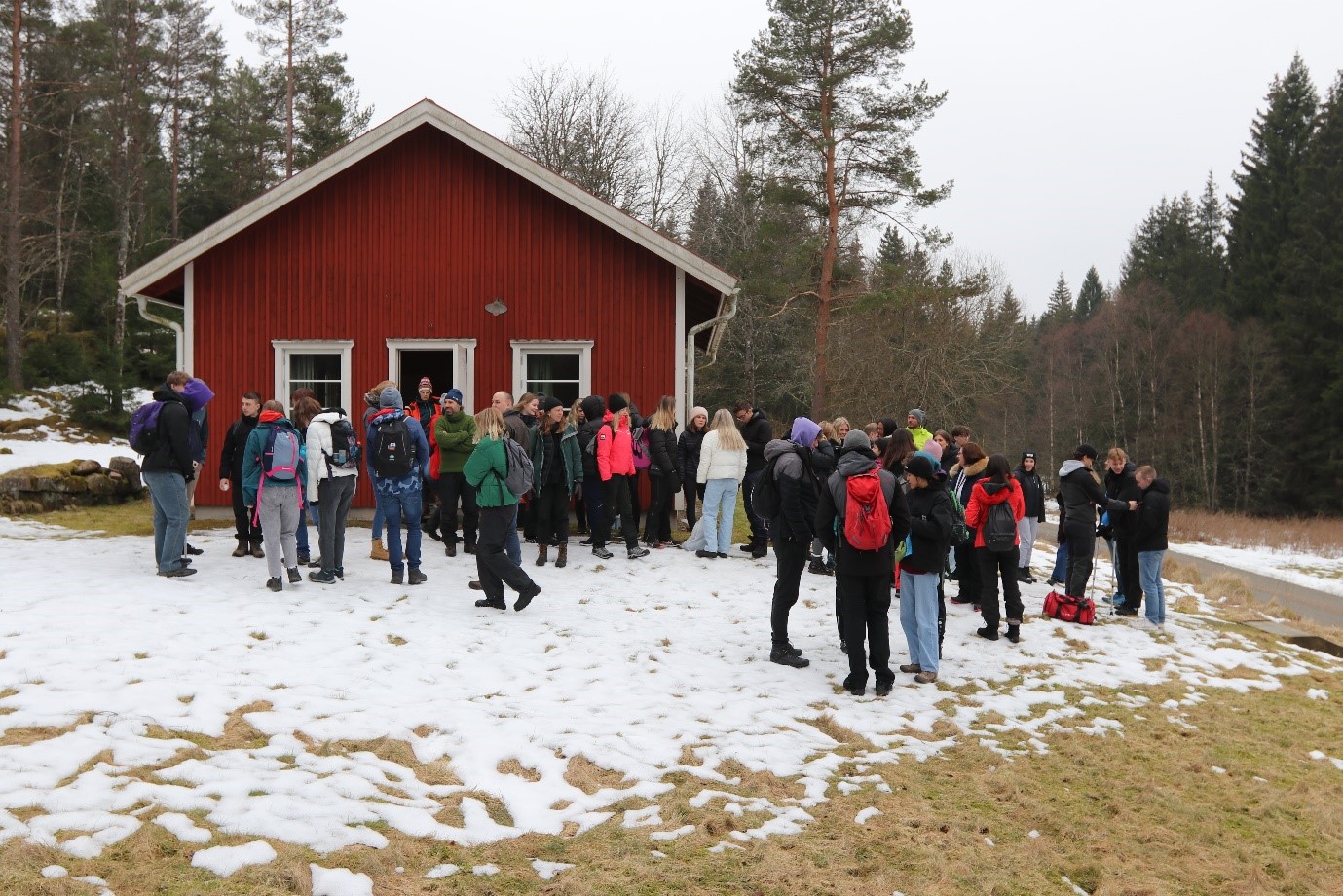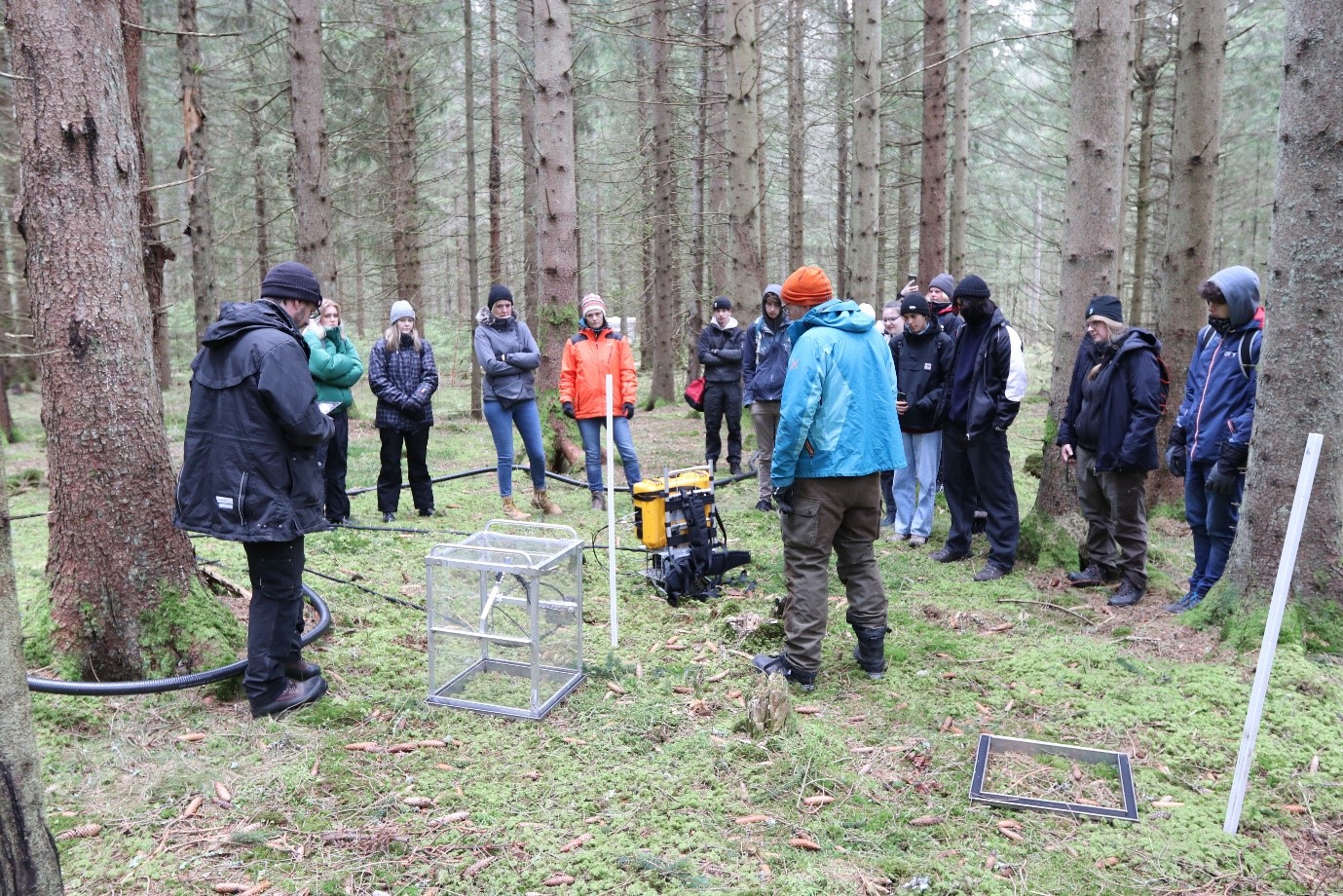In March, the Skogaryd Research Catchment (SRC) welcomed about 50 high school students and their teachers from the Erasmus project “Global heat”. This project is an international exchange between Birger Sjöberggymnasiet Vänersborg (Sweden), Heilig Hartinstituut Heverlee (Belgium), Liceo Scientifico Cannizzaro Palermo (Italy) and the Bundesrealgymnasium Schwaz (Austria).

During their visit, the students tested several methods for studying ecosystem processes and focused on three topics:
1) How much forest is there?
Students measured the diameter and height of trees to estimate the total forest biomass by using tree biomass via allometric functions. Knowing the tree biomass in a forest is of interest for forest management planning, but also for reporting greenhouse gas emissions since the tree biomass accounts for a large amount of carbon storage.
2) How much do soils respire?
Soils emit large quantities of carbon dioxide (CO2) to the atmosphere, which is known as soil respiration. The most common way to measure soil respiration in the field is via manual chambers. The students could test the system used at SRC, which measures the concentration of CO2 directly in the field, via an ultraportable greenhouse gas analyser. The change in CO2 concentrations in the chambers during deployment represents the CO2 flux.
3) What does the soil in a Swedish forest look like?
The students dug a soil profile to study a typical Swedish forest soil. To start with, students described the structure, or soil layers, focusing on the questions: what colour are the soil layers, and how thick are they? This leads to discussions about which processes are important for the formation and development of the soil. Students also measured the soil pH and learned that most Swedish forest soils are acidic. The soil studied was a Podzol, which is the most common forest soil in Sweden.
